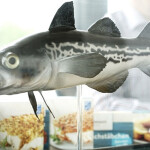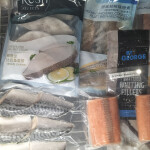Last July, Alberto Núnez Feijóo, the governor of Spain’s Galician regional government, was spotted struggling through Beijing’s heat and humidity into a palatial glass tower owned by COFCO, one of China’s largest food processing and trading companies. Inside, he met with COFCO’s head of European purchasing, Luo Bancheng. Aftewards, wasting no time, Núnez Feijóo then drove on to meet with Jerome Ma, the vice president of online retailer JD.com.
Núnez Feijóo was seeking investment from more Chinese companies – following the purchase by Shanghai Kaichuang of the Galicia-based Albo fishing company in 2016.
At an accelerating pace, Chinese companies and investors are buying into fishing and seafood businesses abroad. It’s just one way that they’re angling into the increasingly large and lucrative market inside China for premium seafood products – particularly from Europe and North America.
Long considered the place where Europeans and Americans went to buy low-cost fish and processed products, China is now considered one of the most promising markets globally for premium seafood. Ian Smith, CEO of the Canadian seafood firm Clearwater Foods, said recently, “We haven’t even begun to scrape the surface of the demand opportunity” in China. His words appear to be mirrored by Indonesia’s president, who has said he wants to create “10 new Balis” to tap into the growth in Chinese tourists who flock to his country’s tourist sites and seafood restaurants. UK-based Young’s Seafood meanwhile, has become the latest of many Western seafood firms planning to enter the China market as a brand or distributor, rather than as a purchaser of locally processed seafood.
All of this begs a big question: if the seafood industry is only scraping the surface of the potential market in China, where is all the supply going to come from to satisfy that demand?
The country’s multi-year campaign to clean up its polluted waterways and coastlines, and to clamp down on illegal shrimp and fish farms, has had the effect of curtailing its aquaculture production capacity. Adding to that, China has exhausted its own domestic waters of live-catch capacity and its top fisheries officials have said the priority is now to shift from quantity to quality – producing less seafood for higher prices.
To make up for the country’s own lower production, Chinese companies have been encouraged to go out and to secure quality and premium resources overseas, to be shipped back to China for consumption or processing. This has happened in wild-catch fisheries across the developing world. China has cut deals with governments in scores of countries in Africa and the Pacific for fishing rights and for ports where products can be landed under Chinese supervision.
But relying on wild-catch fisheries alone won’t be enough to feed demand from the growing percentage of China’s nearly 1.4 billion people. Recognizing that fact, China is potentially on the verge of launching a major expansion of its involvement in aquaculture projects in Africa and Europe. Chinese firms are already testing the viability of this approach: the Guangdong-based Evergreen group is farming tilapia in Egypt, while China’s Commerce Ministry is funding a pilot project for the production of shrimp in Tunisia.
Of course, economic problems – of which there are many in China – could cool China’s love of premium seafood products. And if China can continue to get on top of the grey trade in seafood, the resulting reduction of supply of smuggled product would force prices up and reduce demand for premium imported products.
However, China’s shift to a global seafood powerhouse, demanding the best seafood products and willing and able to pay for them, is all but inevitable.
Speeding that progress along is China’s “One Belt, One Road” initiative, the government’s blueprint to open the world up to Chinese trade. One goal of the OBOR is to increase exports of processed Chinese seafood and food. This is already happening in Indonesia and central Asia, where local processors can’t compete with cheaper imports from China, which in turn seeks to hoover up local premium seafood supply.
The weight China now throws around in the marketplace is not being fully comprehended or responded to by Western governments and businesses. It could be instructive to look at the Chinese model in sourcing beef, another increasingly sought-after protein among Chinese consumers. The Chinese method here is to seek control of supply by buying farms overseas and to import live cattle for slaughter in order to create supply security while also creating meat processing jobs in China. The same is increasingly true in seafood.
There has likewise been little discussion of the inevitable consequences on seafood sustainability and certifications. One consequence is that China will want input and influence in certification and in setting standards and rules that govern the international seafood trade. In a small space of time, China went from being a net exporter to a net importer of shrimp. Its buyers tend to pay cash and don’t (at least not yet) quibble over safety and traceability standards emphasised by buyers elsewhere. It’s not inconceivable that countries in China’s sphere of influence will choose to adapt to and abide by Chinese rather than global production standards, putting Western customers in an invidious position.
Going one step further, given its ambitions and the power it already commands in the marketplace, it likely won’t be long before China starts to set its own standards and seeks to influence standard-setting in the food industries of neighbors and economies that are increasingly reliant on China as a source of funds and infrastructure.
China is moving fast to strategically capture more of the world’s seafood supply, and seem willing to pay the necessary cost – in acquisitive business transactions, foreign trade deals, and a growing for aggressive behaviour on the high seas – to secure its future global pre-eminence.
It’s unclear whether the governments, businesses, and populations of Western countries have a plan to deal with this new reality, or whether at some point down the road, similar to Galician Governor Alberto Núnez Feijóo, they’ll be left scrambling in the Beijing heat.






